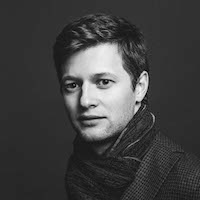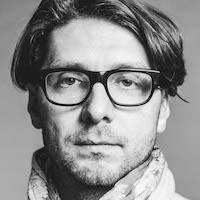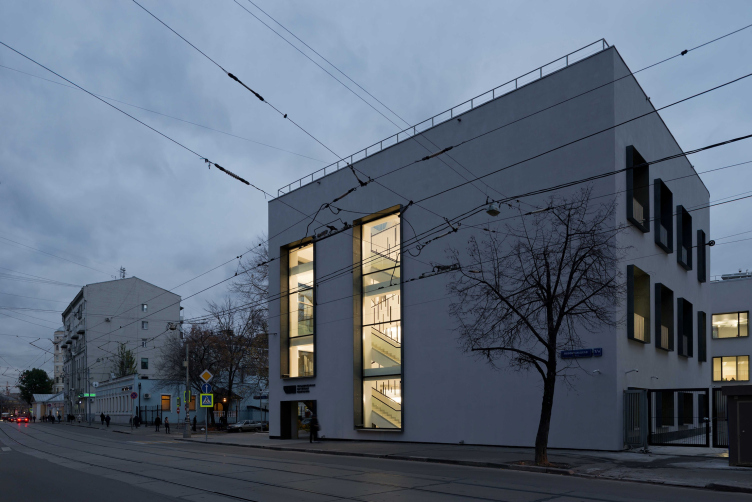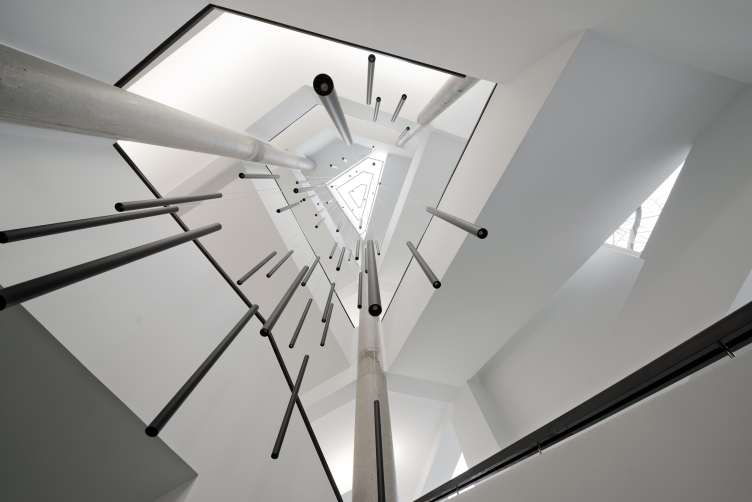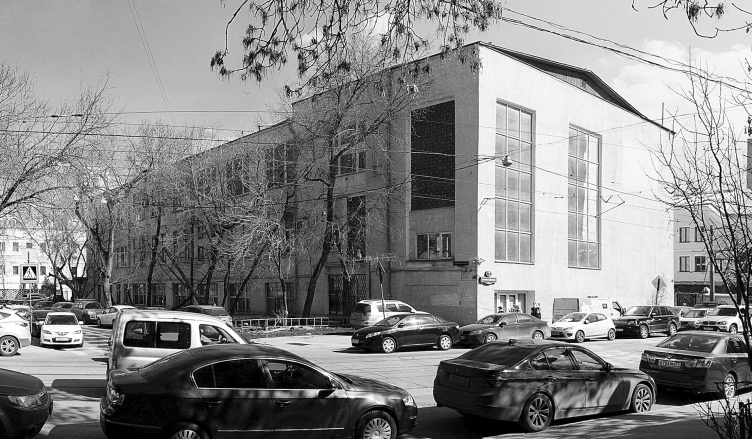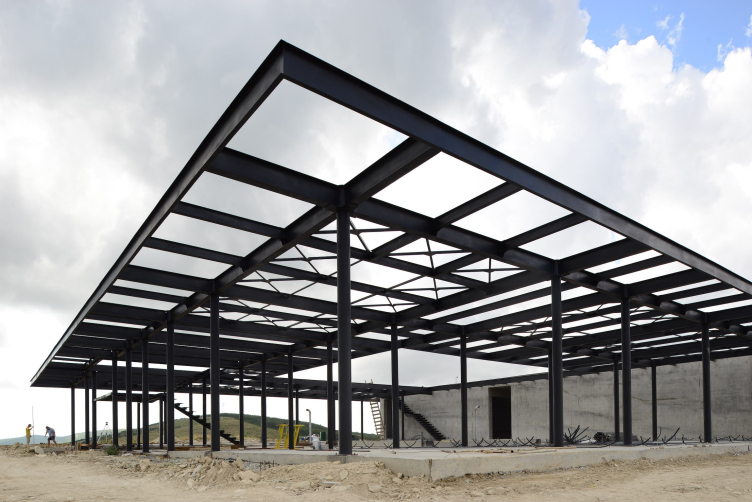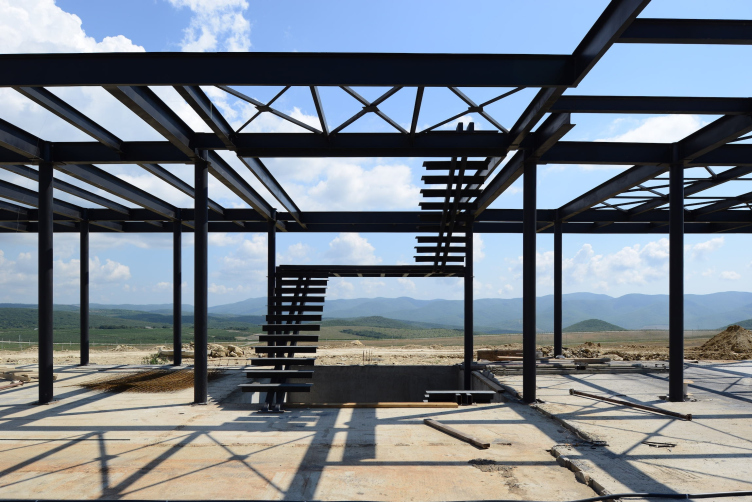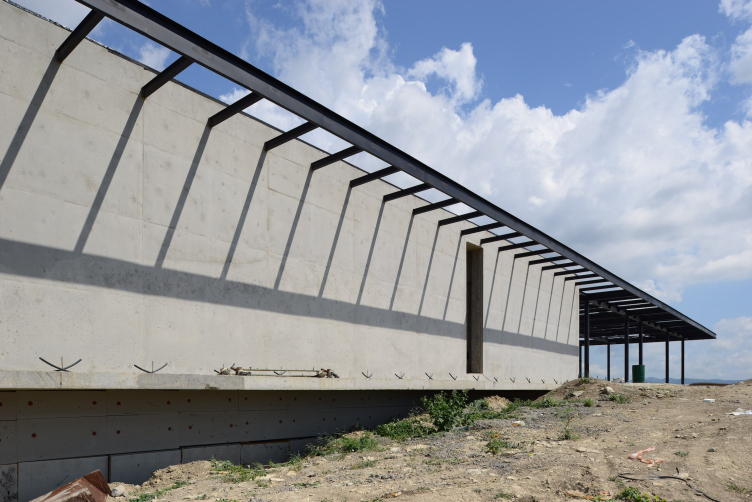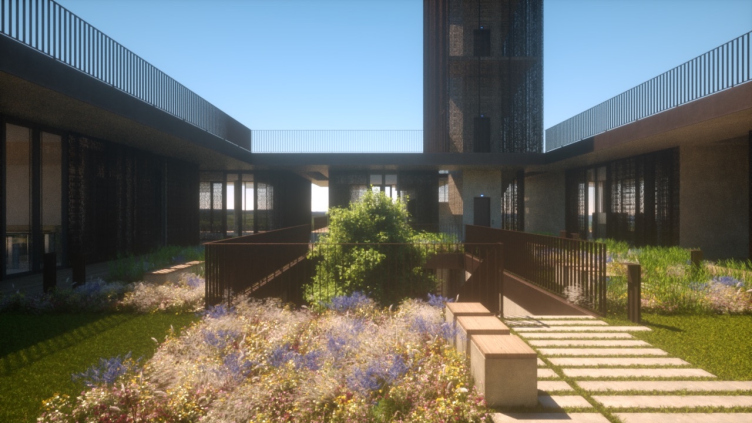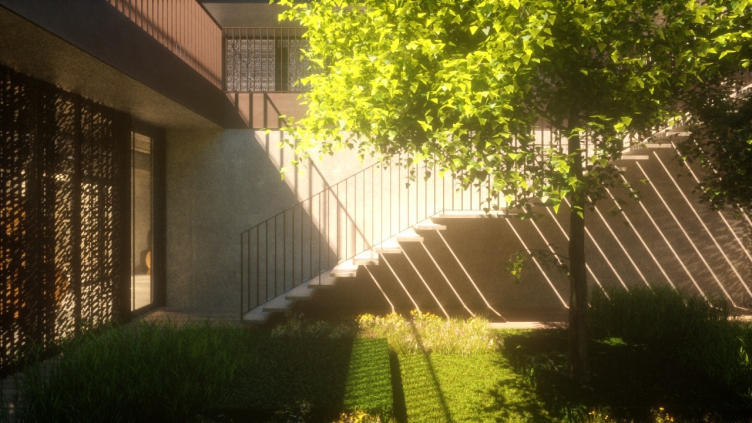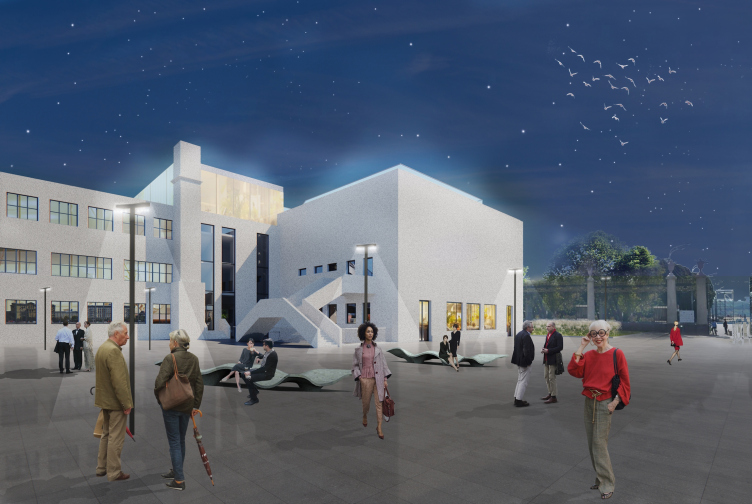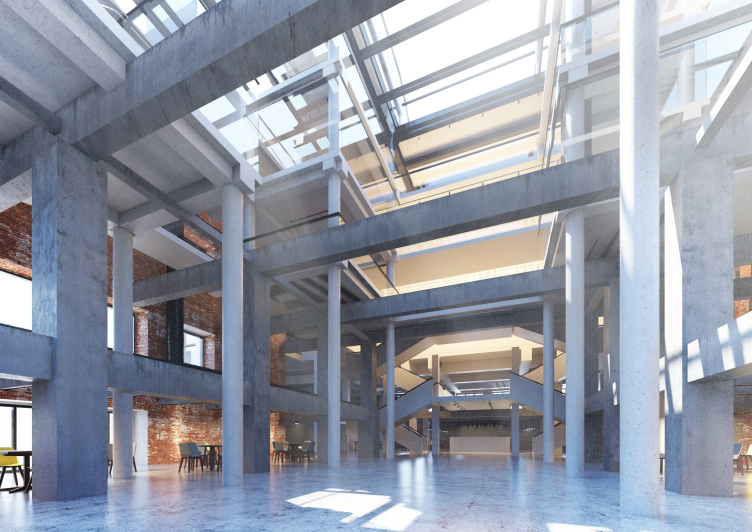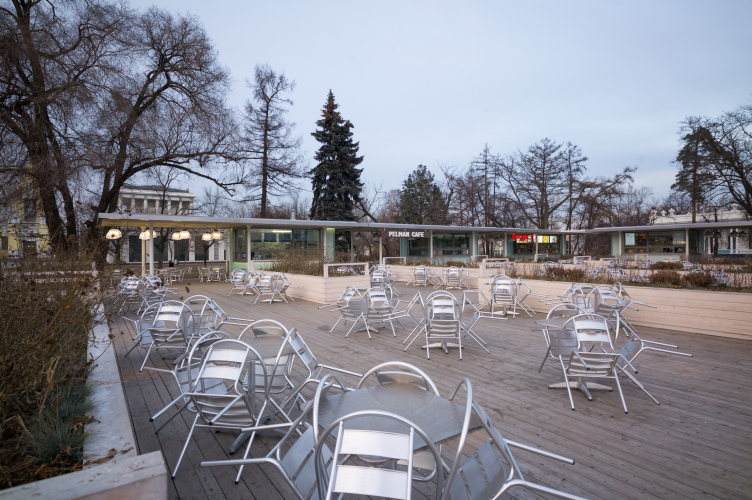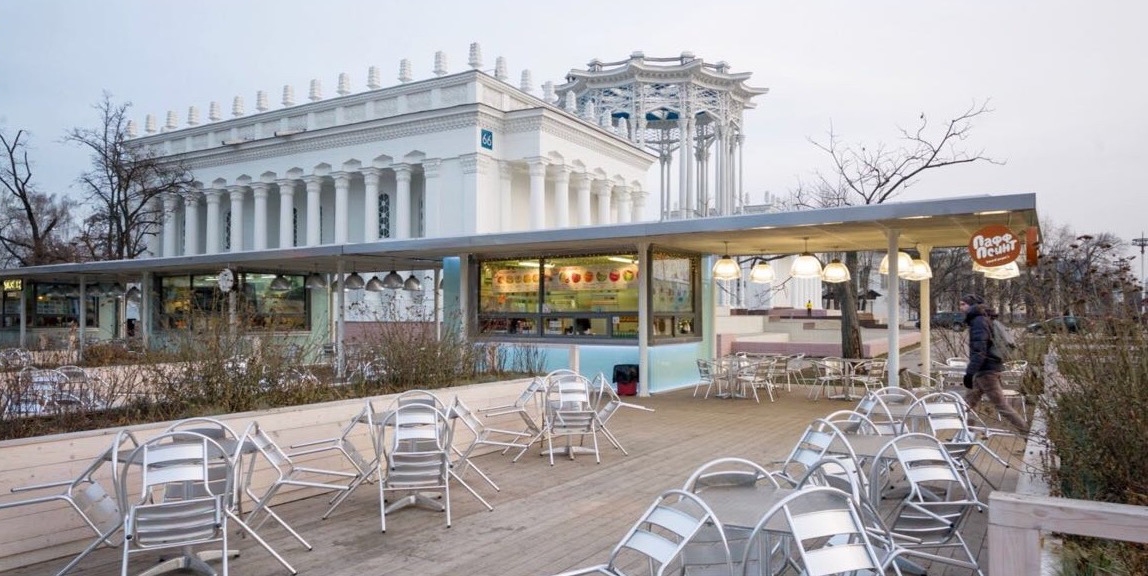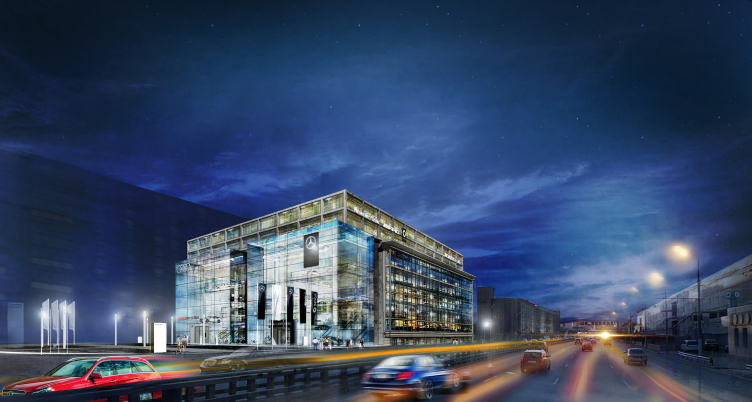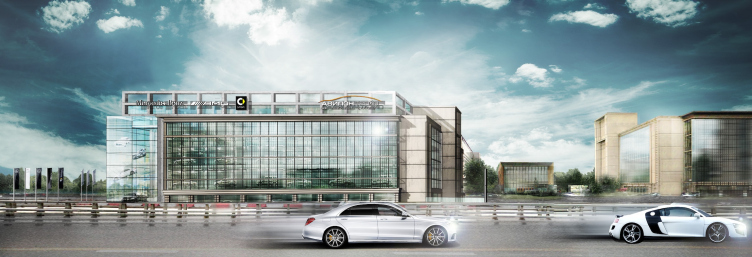Archi.ru:
– How did you choose your profession?
Nikolai Pereslegin:
– Ever since I was a kid, the most exciting thing for me was coming up with some different worlds and creating some different spaces. The way I see it, the profession of an architect presents a great number of opportunities and fields for applying most diverse skills that you may have – including the ability to listen to your opponent, or, on the other hand, to prove your point. My parents graduated from Moscow Institute of Architecture, and my grandmother was also an architect. So, to me, the choice of my profession was based on a whole number of personal factors, one of them being my family background.
Sergey Pereslegin:
– As for me, I always wanted to create things - maybe of a completely different nature but things that I would be proud to show to the world, things that would be there to stay. I considered different options - including but not limited to microbiology. But at some point in time I realized that abstract or fundamental science just wasn't my thing. I wanted to see the results of my work, and I wanted people to see them. But "scientific research" approach was something that I tried to keep, and it helps us immensely in our work.
George Trofimov:
– My choice of profession was absolutely deliberate and by no means accidental. Ever since I was a kid, I loved drawing, making houses from a construction kit, and I seemed to be always making things. And it was my love of inventing and creating things that ultimately lead me to architecture. But before I became an architect I tried my hand at different creative professions. Among other things, I worked as a graphic designer and a photographer. Here is the takeaway from this experience: 99% of any creative product is short-lived and is designed for a really short service life, architecture being about the only exception. The very realization of the fact that you are working for a long-term perspective, that you are doing something serious, something that is meant to be there for ages, is a huge motivator that feeds your creative energy. And this, of course, leaves its mark on our approach to doing things.
What we don’t like is any "packaged" or "prefabricated" solutions. We always come up with new ideas, from simple things to complicated façade projects.
– And what is the subject matter of your research? Shapes? Scenarios of how human beings will live inside your projects?
Nikolai Pereslegin: As a prime mover, the subject matter of our research is, as a rule, the human beings themselves. The most interesting thing about all this is to see how totally different people will react to this or that solution of ours, how these solutions will affect their mood or worldview. This is really exciting – trying to model this or that scenario for the people in order to introduce new values into the reality, values that are important to us.
Sergey Pereslegin: Also, I would like to add that very often the subject matter of our research is information. The first stage of solving any task that we have is about collecting information that will help us to better understand what is required of our project and what makes it different. This can be information from totally different levels – from historical to social, from cultural to functional, or even from the day-to-day operation level.
George Trofimov: What we don’t do is mindless shape-making. Anything we do, we do it for a reason.
Nikolai Pereslegin: The first stage of any of our projects is the scientific survey. We process huge amounts of information; the first sketches come later on down the line.
Sergey Pereslegin: It is this survey that enables us to turn the project into a discovery or an invention.
The founders of Kleinewelt Architekten: Nikolai Pereslegin, Sergey Pereslegin, and George Trofimov. Photo © K. Shelukhin
Reconstruction of the the former building of a communal kitchen at the Novokuznetskaya Street, 2014 Kleinewelt Architekten. Photo © I. Ivanov
Reconstruction of the the former building of a communal kitchen at the Novokuznetskaya Street, 2014 Kleinewelt Architekten. Photo © I. Ivanov
Reconstruction of the the former building of a communal kitchen at the Novokuznetskaya Street, 2014 Kleinewelt Architekten. Photo © I. Ivanov
– At which point do you get down to the design stage?
Nikolai Pereslegin: Our company has a rather strict set of management rules and all the workflows are clearly organized, first of all, in terms of meeting the deadlines. And this gives us the opportunity to work without distraction.
Sergey Pereslegin: Yes, you can go on accumulating your information forever. But at some point we realize that we have enough information and we can get down to actual work.
George Trofimov: And, of course, by all means, we do not downplay the role of intuition in our creative process.
– How does intuition fit in with the design project narrative?
George Trofimov: Well, and how are the great discoveries made? Nobody knows! We gather the information, we think it over, and then we start developing some ideas. The creative search begins.
Reconstruction of the the former building of a communal kitchen (built in 1932) at the Novokuznetskaya Street, 2014 Kleinewelt Architekten. Photo © I. Ivanov
A winery in Haykadzor (Armenia). Construction, 2013. Kleinewelt Architekten. Photo © I. Ivanov
A winery in Haykadzor (Armenia). Construction, 2013. Kleinewelt Architekten. Photo © I. Ivanov
A winery in Haykadzor (Armenia). Construction, 2013. Kleinewelt Architekten. Photo © I. Ivanov
A winery in Haykadzor (Armenia). Project, 2013. Kleinewelt Architekten. Photo © I. Ivanov
– So how do you view shape per se then? How important is it to you?
Nikolai Pereslegin: We think discussing separately your shapes, your planning, and your materials to be an unprofessional approach. We do not consider ourselves as some creators of great art who can draw, say, a beautiful curve, and then everybody is obliged to come running to implement it. But we do our work really well. We bring together a huge number of really different elements and solutions in order to create a really interesting high-quality space. What is the most important, however, is the feeling, the mood that it creates for the people, which ultimately defines their lifestyle. We are the producers of life, no less.
A winery in Haykadzor (Armenia). Project, 2013. Kleinewelt Architekten. Photo © I. Ivanov
Velikan Movie Theater in Gorky Park. Project of reconstructing the multifunctional movie theater situated in the administration building of Gorky Park, 2015 © Kleinewelt Architekten
– And what kind of mood should people be put into? What feelings are your projects supposed to inspire?
Nikolai Pereslegin: What matters to us are the basic human values, and we want our projects to make people kinder, make them think of building and creating rather than destroying and conflicting. We try to appeal to the highest feelings and values – these notions might be a bit on the abstract side but you still can get them across through these or those specific design solutions. Combining our knowledge of technology and the emotion that we put into our work, we try to build in such a way that the life that will take place in our buildings and spaces would make people happy every living second.
Velikan Movie Theater in Gorky Park. Project of reconstructing the multifunctional movie theater situated in the administration building of Gorky Park, 2015 © Kleinewelt Architekten
A pavilion at VDNKh, Construction, 2014. Kleinewelt Architekten. Photo © A. Belov
– Generally, what is Kleinewelt Architekten is about? What words would you use to describe your architecture?
George Trofimov: Of course, we all are individuals but any of our projects is the result of collective work of a whole team of specialists. Any solution that one can see in our projects is the result of repeated discussions and heated debates. We always organize our inner competitions when for about an hour the whole company goes wild, everybody doing his sketches, and then we pick what we think is the best solution and we choose the direction in which to go.
Nikolai Pereslegin: The identity of our architecture is formed thanks to the three layers that our every project consists of. The first layer is science. The second layer is all about our meditation and our emotions. And the third layer is actually about working on the project. Thanks to this approach, our every solution, our every façade, and our every space are rationally justified and individual.
Sergey Pereslegin: A huge mark is also made by the inner code of honor that has formed in the course of multiple discussions and that covers the basic principles and fundamentals of our work. For example, we know for sure that under no circumstances shall we do an imitation selling plastic as wood or stone. This is what I would call “material integrity”.
A pavilion at VDNKh, Construction, 2014. Kleinewelt Architekten. Photo © A. Belov
Dealership center of Mercedes-Benz and Audi on the territory of ZIL Plant. Project, 2016 © Kleinewelt Architekten
– Are you ever confronted with a problem of finding a unique architectural language of your own?
George Trofimov: This problem is solved within the framework of each individual project, and it is strongly dependent on the specific architectural task. For example, if the location or the function calls for some bold statement, we, of course, will not be shy to go ahead and make it.
Nikolai Pereslegin: In each of our projects, we try mend a piece of time-torn or time-worn fabric in order to help this fabric live longer. In each of our projects, we try to fix the world, and each time we try to find the right wrench or the right screwdriver so as to make things fit perfectly, and, God forbid, ни в коем случае не сорвать. But when we understand that there is nothing left to fix here, and the only option is to create something entirely new, we just go ahead and do it, creating this fragment of the world from scratch. And if we commit ourselves to making a new world, make no mistake, it will be a very good one!
Dealership center of Mercedes-Benz and Audi on the territory of ZIL Plant. Project, 2016 © Kleinewelt Architekten



